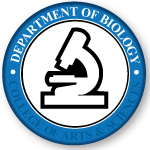Document Type
Article
Publication Date
2008
Publication Title
Journal of Parasitology
Volume
94
Issue
2
First Page
487
Last Page
495
Abstract
Acipensericola petersoni n. gen., n. sp. (Digenea: Aporocotylidae) infects the heart of the American paddlefish Polyodon spathula (Walbaum, 1792) in the Mississippi Delta. It has robust, spike-like body spines arranged in ventrolateral transverse rows; a bowl-shaped anterior sucker centered on the mouth and having minute spines on the inner anteroventral surface only; a pharynx; an inverse U-shaped ceca extending to near the posterior body end; intercecal testes comprising a pre-ovarian testicular column plus a single testis posteriorly; an extensively lobed ovary located medially and immediately posterior to the testicular column; a spherical ootype that is intercecal and post-ovarian; a Laurer’s canal; and a common genital pore. The new species is the first-named aporocotylid collected from a basal actinopterygian. It resembles the chondrichthyan aporocotylids Chimaerohemecus trondheimensis, Orchispirium heterovitellatum, and Hyperandrotrema cetorhini in having an inverse U-shaped ceca, but it is morphologically most similar to the anguilliform aporocotylid Paracardicoloides yamagutii in having that feature plus a comparable anterior sucker, a single testis posteriorly, an intertesticular ovary, and a common genital pore. Sequence data for the complete small subunit ribosomal DNA (18S) do not refute its membership within Aporocotylidae nor its affinity to 1 of those aforementioned aporocotylids: A. petersoni was basal to the few teleost aporocotylids analyzed, and C. trondheimensis was the only taxon basal to A. petersoni. We regard the specimens of Spirorchis sp. previously reported from the shortnose sturgeon Acipenser brevirostrum Lesueur, 1818 as congeneric with the new species.
Recommended Citation
Bullard, Stephen A.; Snyder, Scott D.; Jensen, Kirsten; and Overstreet, Robin M., "New Genus and Species of Aporocotylidae (Digenea) from a Basal Actinopterygian, the American Paddlefish, Polyodon spathula, (Acipenseriformes: Polyodontidae) from the Mississippi Delta" (2008). Biology Faculty Publications. 52.
https://digitalcommons.unomaha.edu/biofacpub/52


Comments
Published in the Journal of Parasitology (April 2008) 94(2): 487-495. Copyright 2008, the American Society of Parasitologists. Used by permission.